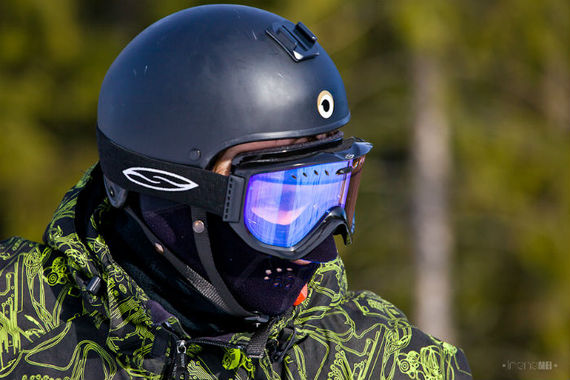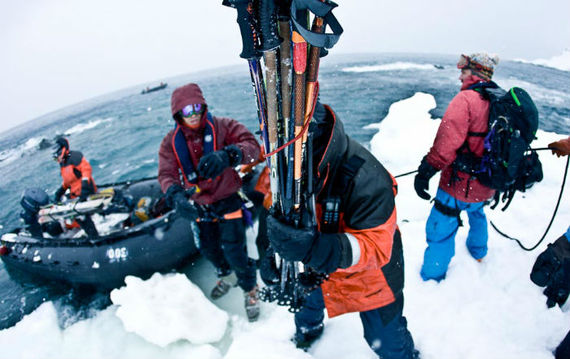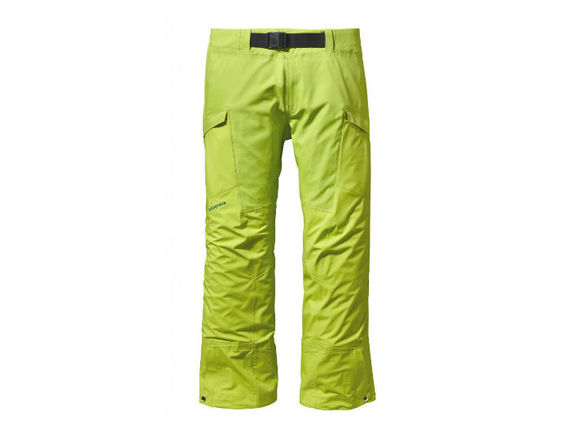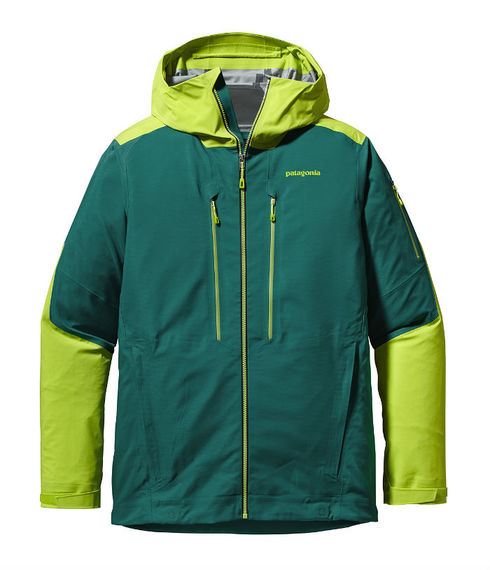Before your first day of skiing or snowboarding, you have to get dressed up in something that makes you feel great. No, I don't mean a fancy suit or pretty dress--I'm talking about gear that will keep you cozy, warm, and dry. Why the emphasis? The wrong gear will leave you feeling miserable. I know it's tempting to "make do" with what you have, but resist the temptation.
Instead, start early and outfit yourself for success. Leave the cotton at home and stick to wool or synthetic fabrics. Once cotton gets wet, either from sweat or snow, it won't dry out, leaving you damp and cold. Don't be the shivering guy or gal skiing in damp jeans.
Here's a ski gear guide that covers the basis, along with a few tips on what to look for:
Start on top
1. Helmet
Wear a helmet. Snow sports aren't couch play, they are physically active endeavors, and that means you might fall. Helmets reduce the incidence of any head injury by 30-50% according to Jasper Shealy, professor emeritus at the Rochester Institute of Technology in Rochester, N.Y.
A helmet could make the difference between a fall that simply bruises your ego and one that sends you to the hospital. Most resorts rent them for about $5 a day.
2. Goggles
Skiing goes better when you can see. It's that simple.
At high altitudes, UV rays are more intense and will bounce off of the white snow into you eyes. This can lead to a condition known as snow blindness. Additionally, you need protection from blowing snow and debris that can irritate your eyes. This is why sunglasses aren't a good option. If your eyes tear in freezing temps, the tears will freeze, irritating your eyes even more.
Simple goggles will set you back $30-40, or you could borrow a pair. Either way, don't skip them.
Under bits to keep you warm and dry
The layers near your body serve two purposes. They insulate you and wick away sweat so you don't end up feeling cold and clammy.
3. Underwear
Choose skivvies made of quick-dry, synthetic fabric. My favorites are made by ExOfficio and can be found in most outdoor clothing stores, such as REI.
4. Base Layer
I'm all about dat' base... Okay, seriously, your base layer should be wool or synthetic. A mid- to heavy-weight is good depending on the rest of your gear. I wear a heavyweight Capilene Patagonia or Columbia Sportwear Omni-Heat base with my ski pants and stay toasty and warm. On top, I used a synthetic base plus a mid layer.
5. Mid Layer
You may or may not need this layer depending on the rest of your gear. Fleece works well. I recommend a zipped jacket that can be undone if you get too warm.
6. Socks
Quality ski socks fit snugly and are taller than regular socks making them a good choice with ski boots.
Trust me--you don't want socks bunching up inside of your ski boots, ouch! Go ahead and spend the money for (or borrow) good socks made from a performance fabric, such as wool. My favorites are made by FITS.
Outer layers that wrap you up
These layers need to be water resistant. Ski pants and jackets are insulated to varying degrees, which influences the other layers you choose. My jacket isn't insulated so I layer more on top, using a heavy base layer plus a mid layer underneath my jacket. My pants have some insulation, so I only need thermal bottoms underneath.
7. Pants
Look for pants that aren't constricting and are waterproof. As a beginning skier, you will spend time on your butt in the snow. Some pants are insulated, while others are just a shell. I'd go for insulated and wear a base layer underneath.
8. Jacket
Again look for a comfortable fit paired with waterproof fabric. Remember that you'll have a base and mid layer on which will require a little extra room.
Both insulated or shell work great, but do look for "pit zips" to cool you off when you get overheated. I also like lots of pockets, especially inside where my stuff (especially my phone) won't freeze.
9. Gloves
Gloves can make the difference between fun and misery. They are also important from a safety perspective--frostbite is no joke. It won't take long for your fingers to turn numb in freezing weather with cheap gloves.
Select gloves that are made for freezing temps and are water resistant. Mittens or fingered is a matter of personal preference. Mittens keep fingers warmer, but offer less dexterity.
Other Important Stuff
To and from the ski resort, wear comfortable shoes that can withstand walking in shallow snow across the parking lot. Waterproof is a good idea. A few more items you shouldn't forget: sunscreen, snacks, and water.




